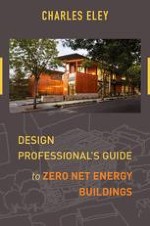2016 | OriginalPaper | Buchkapitel
4. Energy Modeling: Evaluating ZNE before the Utility Bills Arrive
verfasst von : Charles Eley
Erschienen in: Design Professional’s Guide to Zero Net Energy Buildings
Verlag: Island Press/Center for Resource Economics
Aktivieren Sie unsere intelligente Suche, um passende Fachinhalte oder Patente zu finden.
Wählen Sie Textabschnitte aus um mit Künstlicher Intelligenz passenden Patente zu finden. powered by
Markieren Sie Textabschnitte, um KI-gestützt weitere passende Inhalte zu finden. powered by
